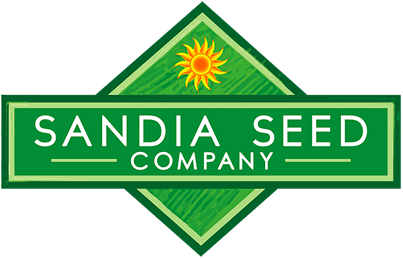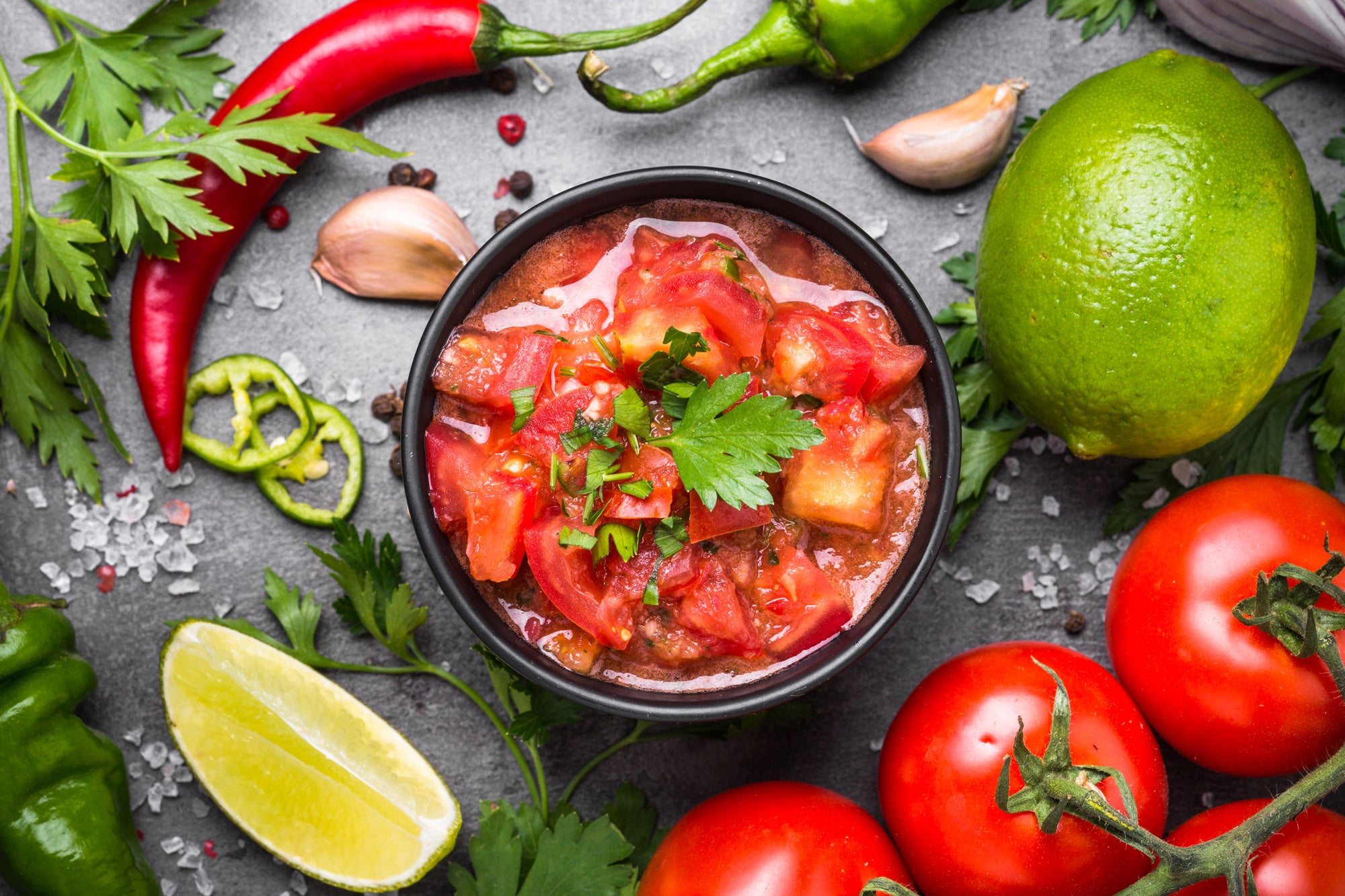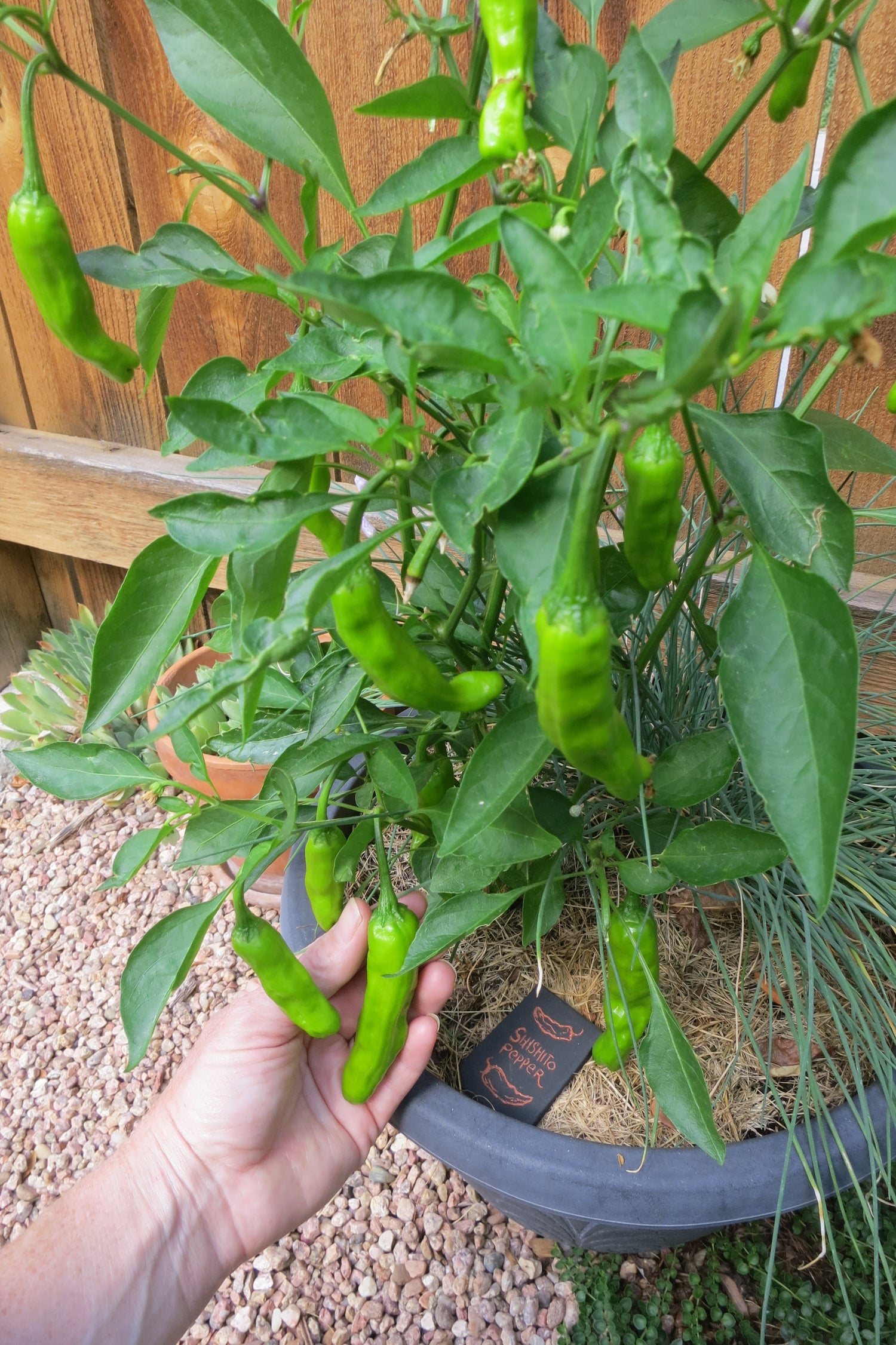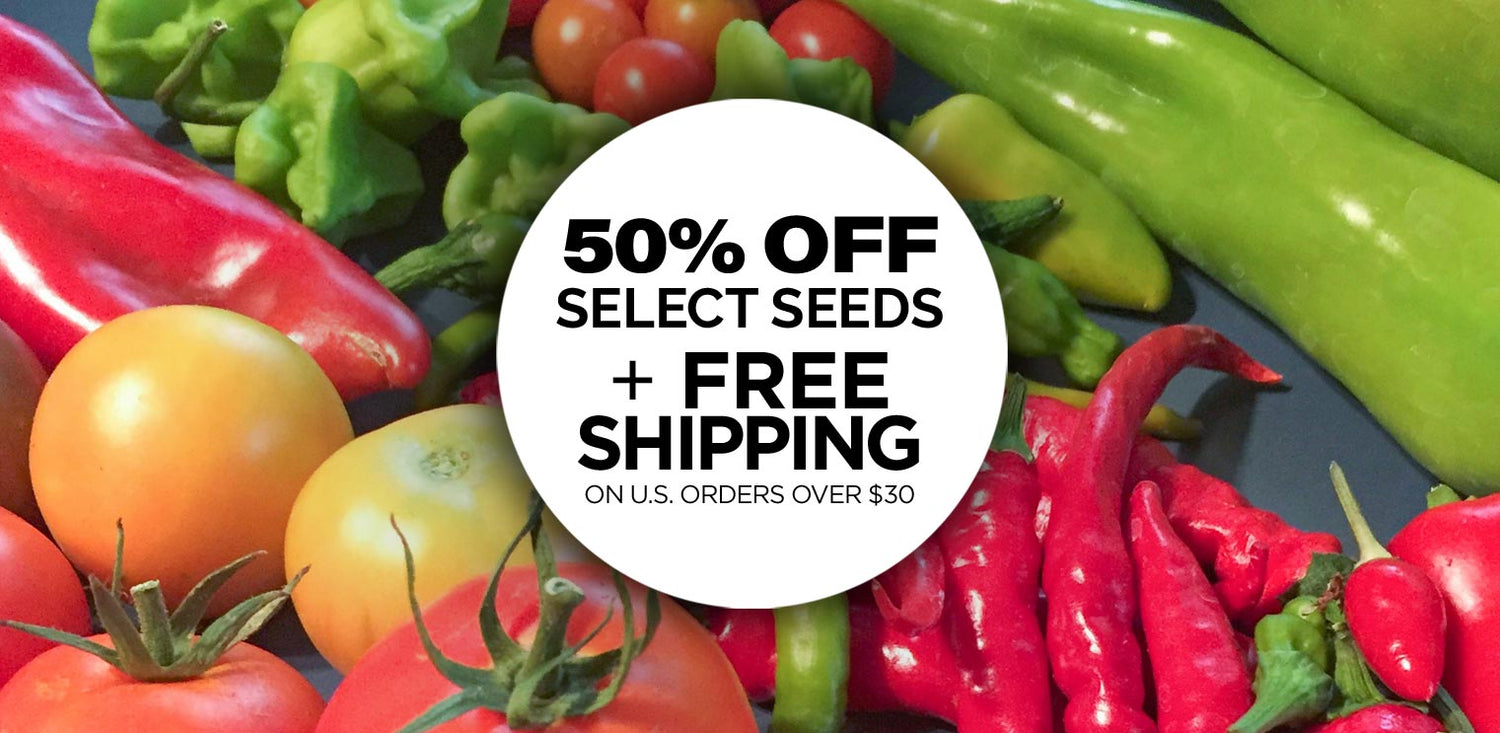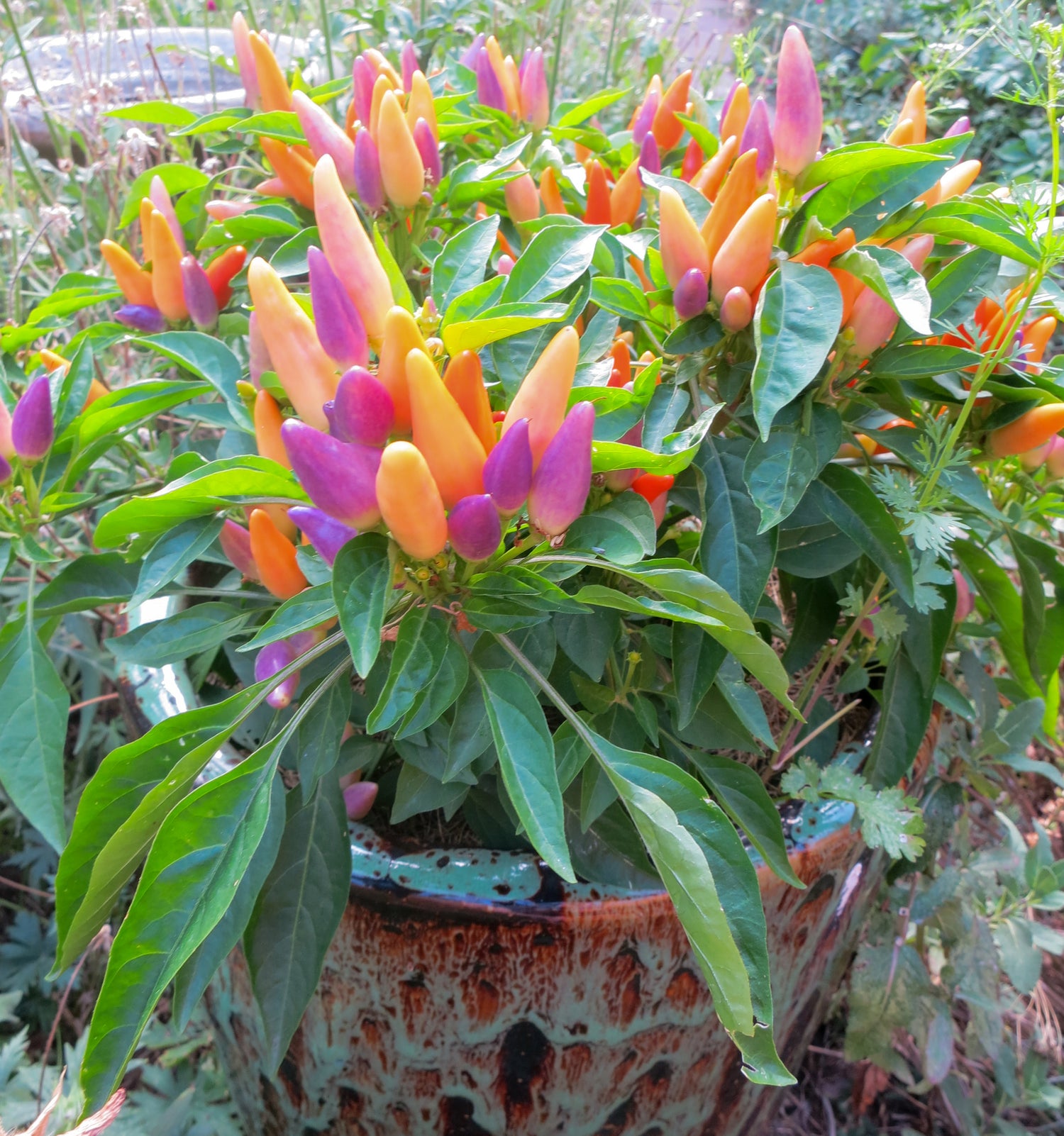Are you finding peppers with white spots on the pods, where it looks like the skin is sunken in, bleached and papery? Some would say they look rotten. But, fear not! This is most likely just sunscald and the rest of the pepper is still edible. 
Yes, you can still eat peppers with sunscald!
We typically just cut off the bad spots and eat the rest of the pepper! Sunscald is just cosmetic, and does not make the pepper un-edible.

How to prevent sunscald
and white spots on Peppers:
You can also grow cowpeas (black eyed peas) in amongst your pepper plants to provide more leaf cover, and they also help boost soil nutrition by fixing nitrogen. Cowpeas are best planted in spring, along with your transplanted peppers and tomatoes.
Blossom End Rot:
Blossom end rot symptoms are similar to those of sunscald, but the biggest way to tell is that sunscald will only occur on the side of the fruit that is exposed to the sun, while blossom end rot can occur on unexposed pepper surfaces. And, like sunscald, while fruits with blossom end rot may appear to be ruined, it is totally safe to cut away affected areas and eat the rest of the pepper! After cutting off the bad spots, we compost them! :)
